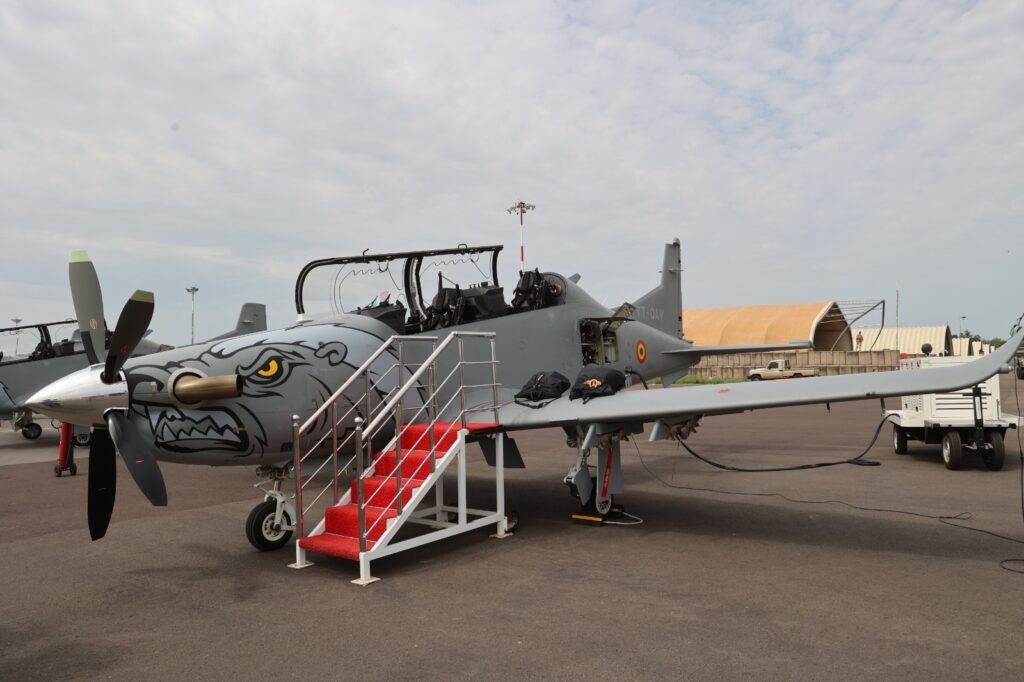Chadian Air Force Receives HÜRKUŞ-C And ANKA-S Aircraft From TAI
At a ceremony held at Adji Kossei Air Base in the capital, N’Djamena, the Chad National Army displayed new equipment procured from various countries following the disaster experienced by the Chad Air Force (Armée de l’Air Tchadienne) in 2017. The ceremony was attended by Chad Defense Minister General Daoud Yaya Brahim, Chad Air Force Commander Brigadier General Idris Amine Ahmed, and Chairman of the Transitional Military Council Mahamat Déby.
Three TAI HÜRKUŞ-C light attack aircraft with serial numbers TT-QAV, TT-QAW, and TT-QAZ, as well as two ANKA drones with serial numbers 21-062 and 22-080, ordered by the Chad government from TAI, were displayed during the military exhibition. This confirmed, for the first time, that Turkish Aerospace Industries delivered the aforementioned systems to the Chadian Air Force. Cirit missiles developed by ROKETSAN for use by Hürkuş-C aircraft and MAM-L munitions for Anka drones were also displayed at the military display.
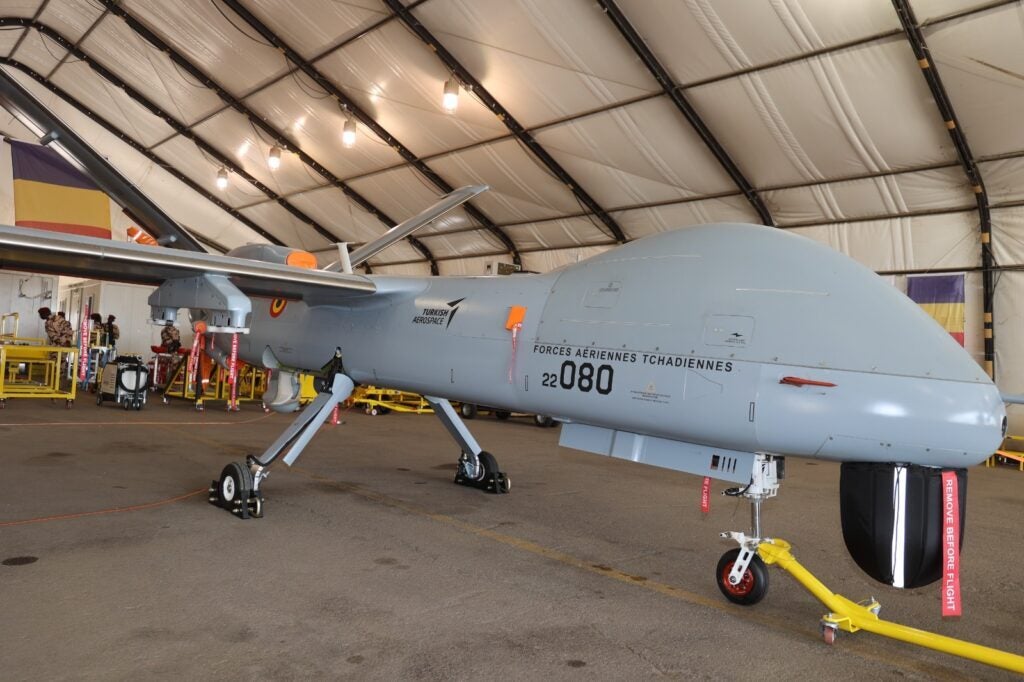
“The Air Force employs high-tech equipment and supplies. As part of the modernization process of the Chad National Army, the government has acquired high-tech equipment and supplies for the benefit of the Air Force.” the Chad Presidential Office said in a statement. Chad Transitional Military Council Chairman Mahamat Déby regarded the acquisition of the aforementioned aircraft and drones as an important turning point for the Chadian Air Force. Déby also stated that these systems will improve Chad’s ability to defend and protect its territory, which is located in a complex region.
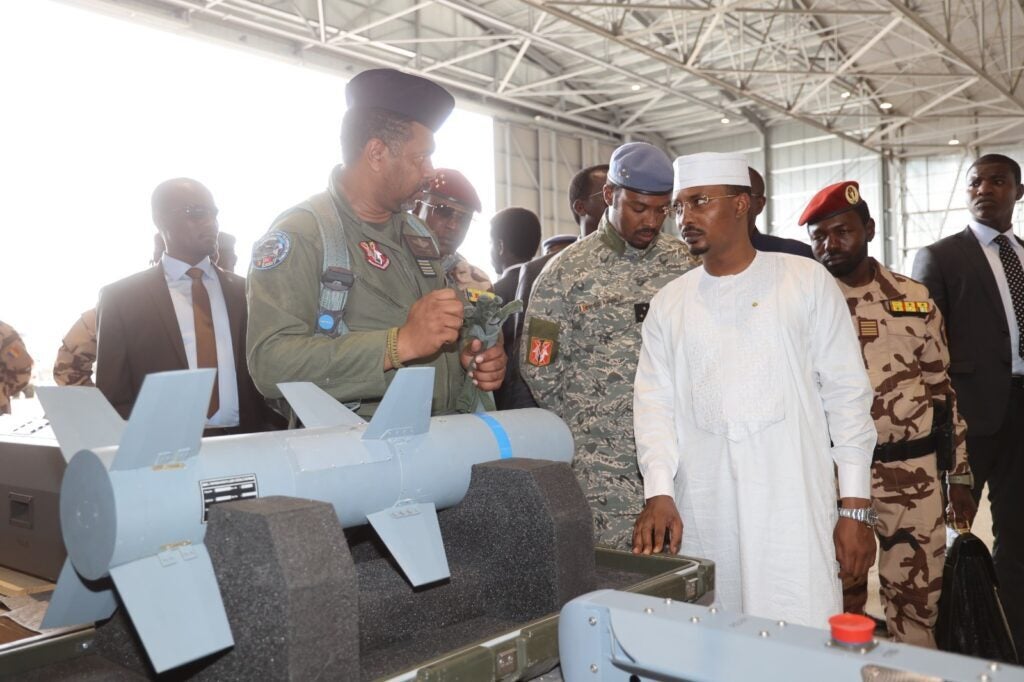
TAI General Manager Prof. Dr. Temel Kotil first announced to the public in July last year that the Chad government had signed a contract with Turkish Aerospace Industries for the supply of HÜRKUŞ-C light attack aircraft. Kotil stated at the time that Chad was the second African country after Niger to purchase HÜRKUŞ aircraft, but he did not provide details such as the cost of the contract or the number of aircraft included. The contract for the supply of two ANKA-S drones for Chad was signed at the Abu Dhabi National Exhibition Center (ADNEC) during the International Defense Exhibition and Conference (IDEX 2023). At the same exhibition, TAI sold 12 ANKA-S to Indonesia and 10 to Algeria. The total cost of the three countries’ orders for 24 Anka UAVs is estimated to be more than $500 million.
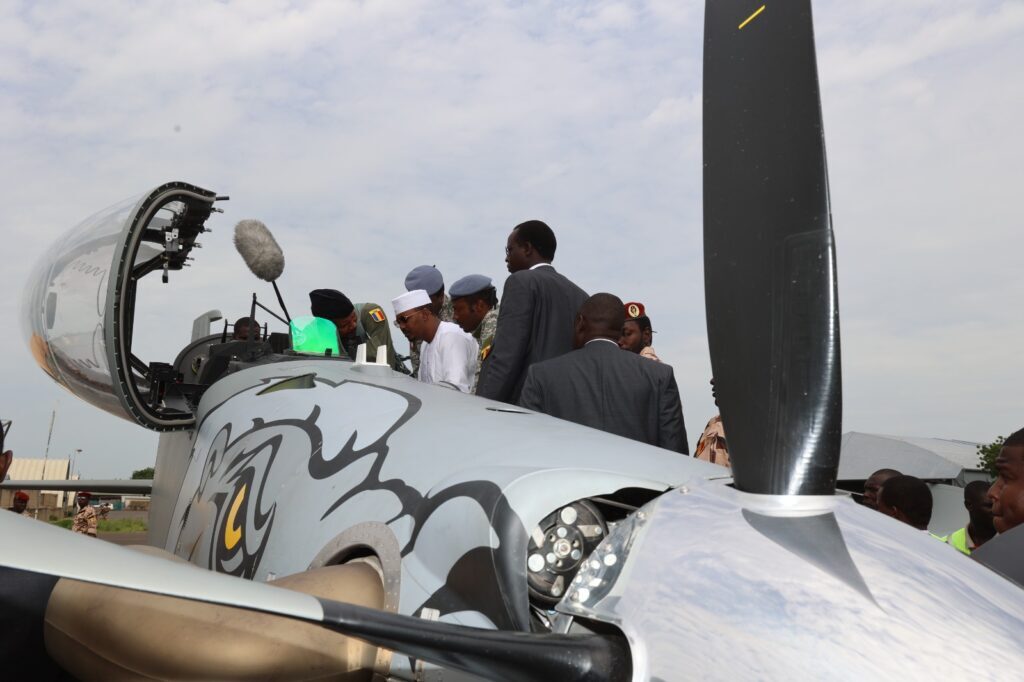
The Chadian Air Force will use the Hürkuş turboprop aircraft and Anka long-endurance UAVs to combat Islamist-Salafi terrorist groups that frequently threaten the country’s territories in the Sahel region. Chad had previously applied to the Belgian government to increase its firepower by modernizing and arming two of the Cessna 208 ISR aircraft donated by the US. Belgium, however, did not respond positively to the request.
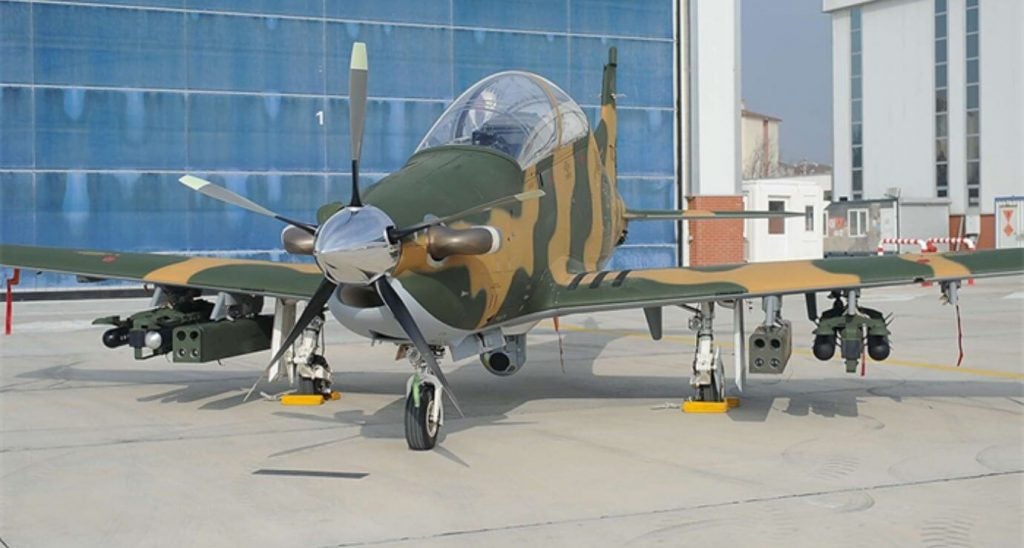
Hürkuş is a two-seat, single-engine turboprop aircraft intended as a new generation trainer as well as a platform for light attack and armed reconnaissance combat missions. The Hürkuş-A is the basic version available to non-military customers, while the Hürkuş-B is a more advanced model with more advanced avionics. The Hürkuş-C is the armed variant capable of providing close air support. Hürkuş measures 3.70 meters in height, 11.17 meters in length, and 10.91 meters in wingspan. The aircraft has a 1,605-foot (489-meter) takeoff distance, a 1945-foot (593-meter) descent distance, a maximum climb speed of 4,370 feet per minute (22 meters per second), and a top speed of 574 kph. According to tests that were performed, Hürkuş’s longest possible flight time is 4 hours and 15 minutes. The armed version of the aircraft can carry eight Cirit missiles, two 12.7mm machine guns, and Roketsan’s long-range air-to-surface anti-tank UMTAS missile. Efforts are underway to enable Hürkuş to utilize the precision and winged guidance kits developed by TÜBİTAK/SAGE, as well as the laser-guided missile Mızrak from Roketsan.
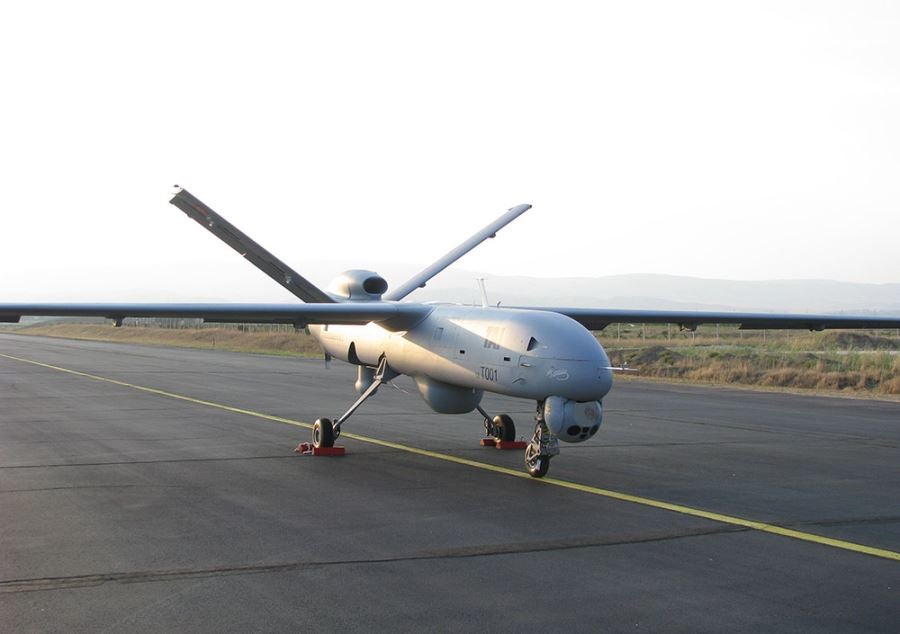
The ANKA-S, which has been in the inventory of the Turkish Air Force since 2014 and has been exported to six countries so far, has a length of 8.6 meters, a wingspan of 17.5 meters, a maximum takeoff weight of 1,600 kilograms, and a useful load capacity of 350 kilos, according to information provided by TAI. The TEI production PD-170 170 horsepower piston turbo diesel engine with three-blade propellers, which has an output of 340 horsepower, enables the ANKA-S to go at a top speed of 117 knots (217 km/h). The UAV can reach a maximum altitude of 30,000 feet and has a maximum flying time of 30 hours. It is designed to carry out day and night reconnaissance, surveillance, fixed/moving target detection, identification, tracking and destruction, and real-time image intelligence missions. The Aselsan CATS (Common Aperture Targeting System) FLIR System and a domestically manufactured flight control computer are installed aboard the ANKA-S UAV. Four Roketsan MAM-L Laser Guided Munitions can be carried by ANKA drones, which can detect targets and perform laser marking owing to the CATS electro-optical reconnaissance, surveillance, and targeting system.

